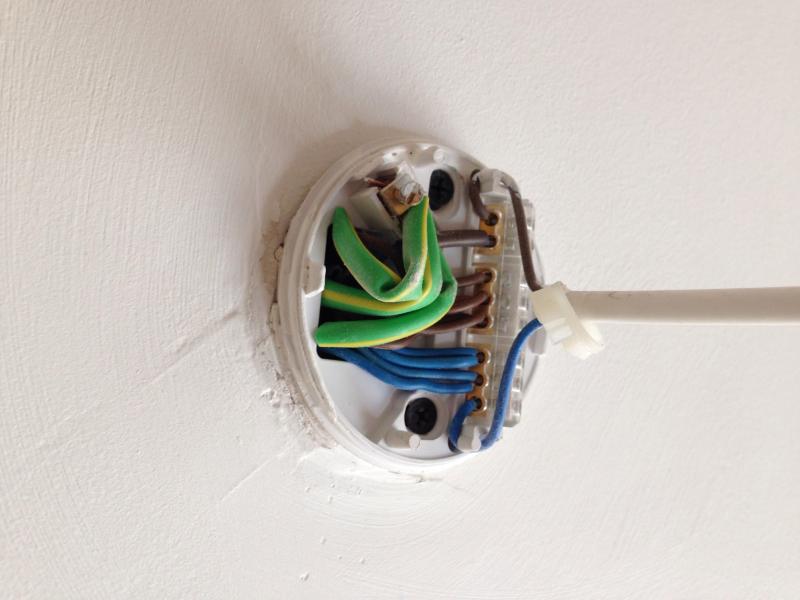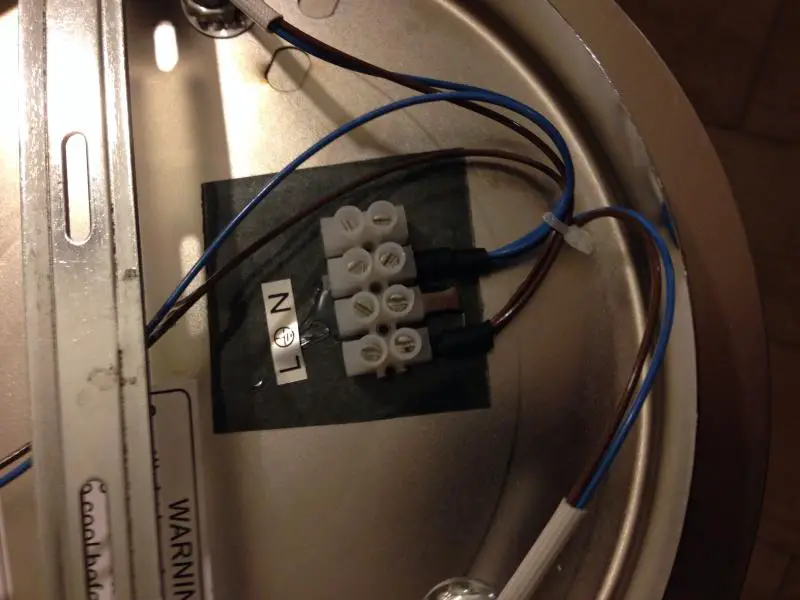Evening all, apologies if this has been asked before but cannot see that it has and have checked the sticky but many of the images are missing.
I have a question regarding the electrical configuration of a ceiling light. Before I ask, I must iterate that I will not even dream of messing with the electrics but would like to gain an understanding of my setup before I call in an electrician.
I have a ceiling rose in my kitchen that I understand is mid loop and controlled by 1 switch alone. The switch also only controls this light
However the wiring config of the rose is as follows -
Connector 1 - 1 blue neutral from fitting
Connector 2 - 2 blue neutral wires doubled up
Connector 3 - 2 blue neutral wires doubled up
Connector 4 - 2 brown live wires doubled up
Connector 5 - 2 brown live wires doubled up
Connector 6 - 1 brown live
Connector 7 - 1 blue sheathed with brown (switch live)
Connector 8 - 1 brown live from fitting
3 additional earths to earth connector
My confusion lies with what the doubled up neutral and live wires are for? From my understanding for a mid loop ceiling light on 1 switch there should only be 1 wire per connection
I've added a picture if it helps?
[/list]
I have a question regarding the electrical configuration of a ceiling light. Before I ask, I must iterate that I will not even dream of messing with the electrics but would like to gain an understanding of my setup before I call in an electrician.
I have a ceiling rose in my kitchen that I understand is mid loop and controlled by 1 switch alone. The switch also only controls this light
However the wiring config of the rose is as follows -
Connector 1 - 1 blue neutral from fitting
Connector 2 - 2 blue neutral wires doubled up
Connector 3 - 2 blue neutral wires doubled up
Connector 4 - 2 brown live wires doubled up
Connector 5 - 2 brown live wires doubled up
Connector 6 - 1 brown live
Connector 7 - 1 blue sheathed with brown (switch live)
Connector 8 - 1 brown live from fitting
3 additional earths to earth connector
My confusion lies with what the doubled up neutral and live wires are for? From my understanding for a mid loop ceiling light on 1 switch there should only be 1 wire per connection
I've added a picture if it helps?
[/list]



